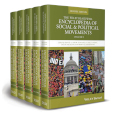Policing Protest
Abstract
Relying mainly on protest as a means to put pressure upon decision-makers, social movements challenge the power of the state to impose a monopoly on the use of legitimate force. Taking to the streets, often forcing their presence beyond the legal limits in order to get their voices heard, they directly interact with the police, who are supposed to control public order. In their interventions, the police force therefore has to realize an uneasy balance between the defense of state power through the implementation of law and order and the recognition of demonstration rights. The intervention of the police in the case of violations of law is additionally not automatic: in public order, many minor violations are tolerated in order to avoid major disorders. While sometimes the government gives specific orders (or at least sends signals) about the type of intervention required (or desired) at political demonstrations, the police enjoy broad margins of discretion, at different hierarchical levels, as most decisions are taken on the spot, and are determined by the assessment of the specific situation as well as by interactive dynamics.



